What is a 5V relay module? This is a question that we get asked all the time here at Relay Module, and it’s a great question! A 5V relay module is an electronic component that allows you to control high-voltage devices using low voltage signals. They are often used in robotics, automotive applications, and home automation. In this article, we will answer some of the most common questions about 5V relay modules, and provide some tips on how to use them effectively.
What is a 5V Relay Module?
The most common type of relay module uses 5 volts of DC power and is composed of a small PCB (Printed Circuit Board) with an array of components, including the relay itself.
The relay consists of an electromagnet surrounded by an activating coil or armature, and two sets of contacts called NO (Normally Open) and NC (Normally Closed). When a current passes through the coil, it creates a magnetic field that pulls the armature up and closes the contacts, allowing electricity to flow from one set to the other. Once current stops flowing through the coil, the armature falls back down, opening the contacts and stopping the flow of electricity.
This action can be used to control devices like motors, lights, or even heavier loads such as air conditioners. Relay modules allow the control of higher voltage circuits without the need for additional hardware or wiring. This makes them ideal for a variety of DIY projects and applications where safety is a priority.
Relay modules come in many shapes and sizes, including 5V models that operate on five volts of direct current (DC). These are often used with microcontroller boards such as Arduino, Raspberry Pi, Beaglebone Black, PIC MCUs, and other popular platforms. They can also be found in commercial products such as remote-controlled switches and alarm systems. [1], [2]

5V Relay Module Components
A 5V relay module contains various components that make it work. A 5V relay module typically consists of a coil, one or more switch contacts, and an electronic switching device that is triggered by the coil. It’s important to note that there are many variations of the 5V relay module, and each type may have different components.
Relay
At the heart of a 5V relay module is the relay itself.
When this current passes through the coil, it creates a magnetic field which attracts and moves the armature inside the relay to close or open certain contacts.
Output Terminal
The output terminal of the 5V relay module is where electrical current passes through the switch contacts. When the coil is activated, this will allow electricity to flow to whatever devices are connected. Depending on the type of relay module, it may have a single output terminal or multiple outputs depending on its specific purpose.
Status LED
Most 5V relay modules also include a status LED that lights up when the module is in use. This helps to indicate whether or not the module is currently active, and if so, what type of current is passing through it. The LED may be triggered by one of two methods—either an output voltage or a separate control signal.
Power LED
Many 5V relay modules also have an LED that indicates when the module is powered on. The power LED will light up if a voltage is applied to the module, and will remain lit until power is removed.
Freewheeling Diode
Another common component of a 5V relay module is the freewheeling diode. The purpose of this component is to protect the rest of the circuit from back EMF (electromotive force) that can occur when the relay switch opens. The diode will draw off any excess voltage, acting as a safety measure for delicate electronics connected to the output terminal of the module.
Input Connector
The input connector of a 5V relay module is typically a 3-pin or 4-pin connection that allows the user to connect the relay module to an external control circuit. The connectors can be either male or female, depending on the type of application. The pins are usually labeled with their respective signals: GND (ground), VCC (positive voltage supply), IN1 and IN2 (inputs).
A 5V relay module usually draws power from Vcc, which is generally between 4.5 volts to 6 volts. Ground should also be connected for proper operation. Inputs can then be used to activate or deactivate the relay by sending a low-voltage signal through them.
Switching Transistor
The transistor is usually connected to two points on the board, one for energizing the coil and the other for providing ground connection. When activated by current from its power source, it will close or open a contact point depending on how it’s wired.
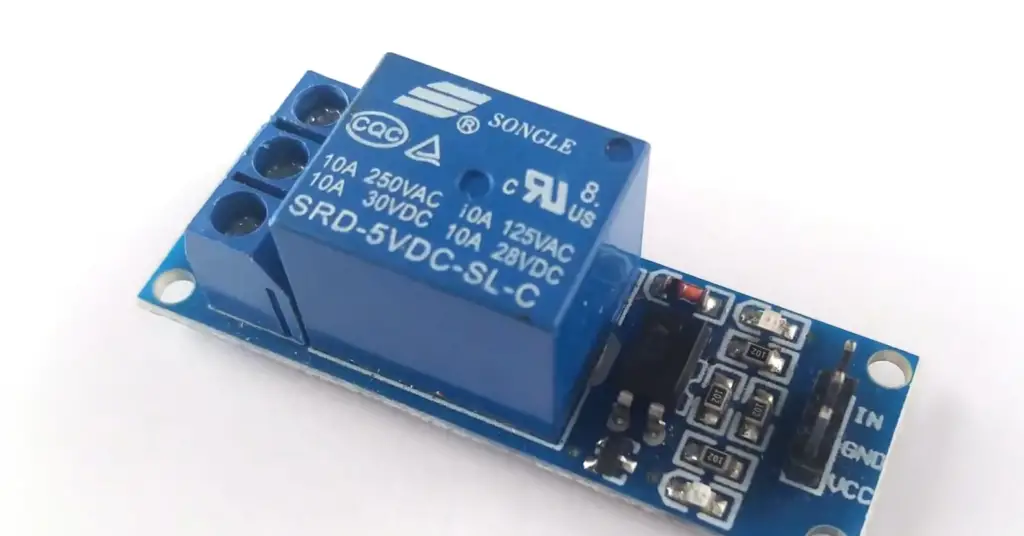
5V Relay Module Specifications
It’s important to understand the specifications of a 5V Relay Module before purchasing one. In this section we will discuss the most important aspects of a 5V Relay Module, including its power source, contact rating, and switching time.
Common Contact
The Common Contact is a pin that’s used to connect through the load and is usually labeled as “COM” on the module. It’s important to note that this pin always carries a voltage, regardless of the state of the Inputs (which we will discuss in more detail later).
Normally Open
The most common contact pin configuration for 5V Relay Modules is the NO (Normally Open) and NC (Normally Closed). This means that when electricity passes through the Coil, the armature of the relay will close the contacts, allowing power to flow from one set to another. When electricity stops flowing through the coil, the armature will open up again and stop the power flow.
It is important to note that this type of relay should not be used in applications where high voltages are present or where high current levels need to be switched on and off. A higher rated relay would be necessary for such applications.
Signal Pin
The Signal Pin is the pin that receives a signal from an external device such as a microcontroller or Arduino board. This pin will provide an input voltage of 5V for the Relay Module to work, allowing it to switch at low current and also higher switching currents.
5V VCC
The 5V Relay Module requires a 5V power source, or VCC. This is typically provided by a microcontroller or an external power source. The relay module can support voltages up to 12V and will use the VCC to switch the relay on and off.
Ground
Finally, we’ll look at the ground connection in a 5V Relay Module. The ground pin is used to complete the electrical circuit and must be connected to an appropriate power source. Generally, this will either be the same voltage as the relay (5V) or a lower voltage (0-3V). [1]
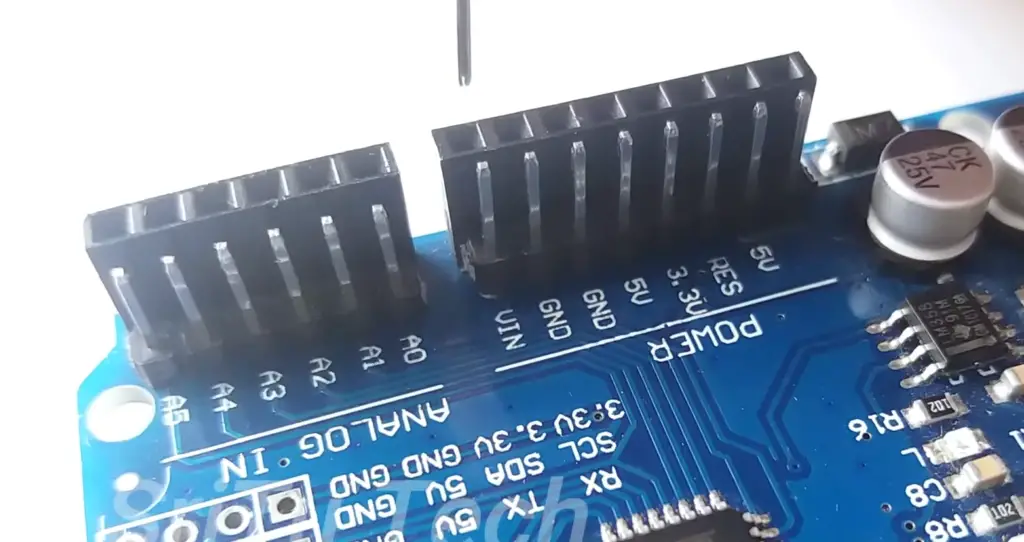
5V Relay Module Applications
Now that you have a good overview of what a 5V Relay Module is and how it works, let’s dive into some of the applications that you can use your relay module for.
Mains Switching
One of the most common applications for a 5V relay module is switching mains voltage. Mains voltage generally refers to anything above 24 volts, and can be used to control larger motors or devices that require more power than what you can provide with your typical low voltage circuit.
By using a 5V relay module, you can switch mains voltage on and off without having to directly touch it yourself. This makes it very safe for controlling high-voltage appliances from small microcontrollers, as long as all safety precautions are taken into account when designing your circuit with the relay module.
Electrical isolation in between high & low power sources
Another useful application for a 5V relay module is electrical isolation between a high power source and a low power source. Many microcontrollers can’t handle large voltage spikes that could be present in an external circuit, which could cause it to malfunction or even damage the device itself.
Using a 5V relay module, you can isolate the two circuits from each other and provide protection against these voltage spikes. This way, your microcontroller will not be affected by any fluctuations or changes in the external circuit and will remain safe from any unexpected damage.
Automatic electrical appliances
Another application for a 5V relay module is controlling electrical appliances with an automatic switch. This can be done by connecting the appliance to one side of the relay, and powering the other side with your 5V source. When you send an electric current through the coil inside the relay, it will open or close depending on which direction you are sending it in. This creates a simple circuit between your power source and appliance that you can control manually or programmatically.
Home automation
Similarly to controlling electrical appliances, you can use a 5V relay to create home automation systems.This is done by setting up the relay so that it turns on or off when certain conditions are met. For example, you could have a 5V relay connected to your lights which turn them on and off based on the time of day or how much light is in the room. You could also combine multiple relays together for more complex automations such as opening/closing curtains depending on the temperature outside or controlling multiple outlets at once.
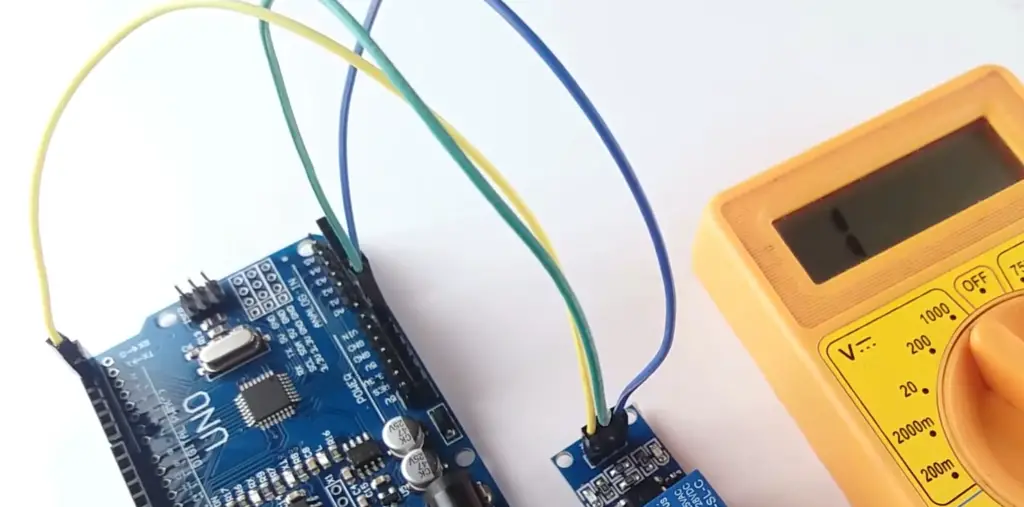
Lights
Another way to use a 5V relay module is for controlling lights. This can be done by connecting the light to one side of the relay, and powering it with your 5V source. When you send an electric current through the coil inside the relay, it will open or close depending on which direction you are sending it in. This creates a simple circuit between your power source and lamp that you can control manually or programmatically. [1], [2]
Advantages of the 5V Relay Module
Using a 5V relay module comes with several advantages. In this section we will discuss some of the advantages that come along with using a 5V relay module.
Contacts can be easily changed
One of the main advantages of using a 5V relay module is that contacts can be easily changed. This means that you no longer have to worry about having to replace your relay if it fails or breaks down, as you can simply replace the contact and continue working with the same device. The benefits of this are two-fold; firstly, it means less downtime since you don’t have to wait for a new device to arrive and secondly, it gives you greater flexibility in your setup, since you can now choose which contact will work best for each application.
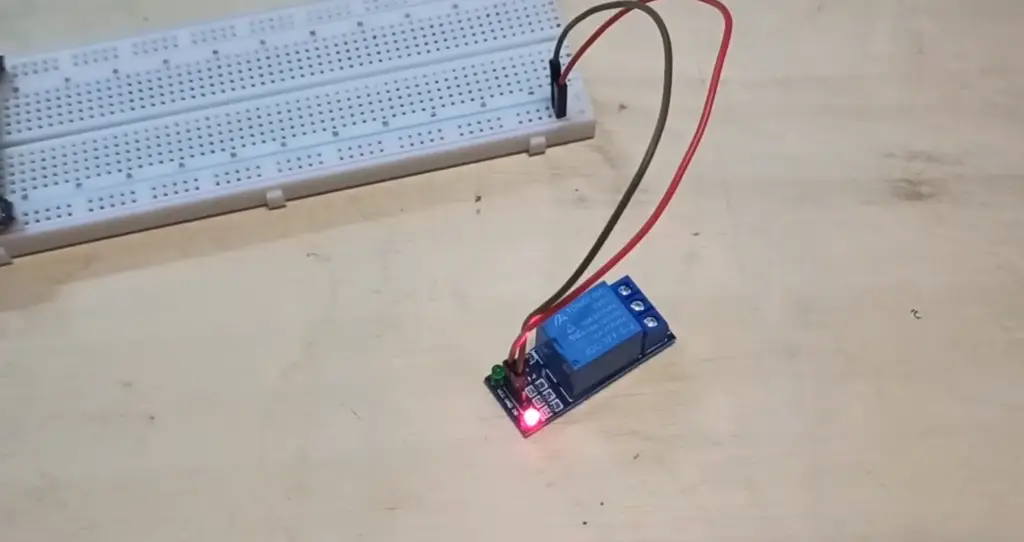
Can be controlled easily
Being a remote device, the 5V relay module can be controlled easily. It is possible to use a signal from a microcontroller or even an Arduino board to control it. This makes it easier for many applications that require remote control of devices such as motors, pumps, lights and more.
Several contacts can be controlled using a single signal
Another of the most notable benefits of using a 5V relay module is that several contacts can be controlled by a single signal. This means that you can use one signal to control multiple electrical outputs and inputs from the same module, allowing you to more efficiently manage your device’s operations.
Works well under high temperatures
Another advantage of using a 5V relay module is that it works well under high temperatures. This means that it can be used for applications such as controlling motors and pumps in hot environments. It also has an extended life, as the contacts don’t corrode or degrade over time. These factors, combined with its affordability and flexibility, make it an ideal choice for many different types of applications.
It can switch AC or DC
Finally, the 5V relay module is capable of switching both AC and DC signals. This makes it ideal for applications where you need to control devices with different power sources.
All of these advantages make the 5V relay module a great choice for many applications where remote control or multiple contacts are needed. With its easy setup and flexibility, it’s no surprise that this type of device has become so popular in recent years. [1], [2]
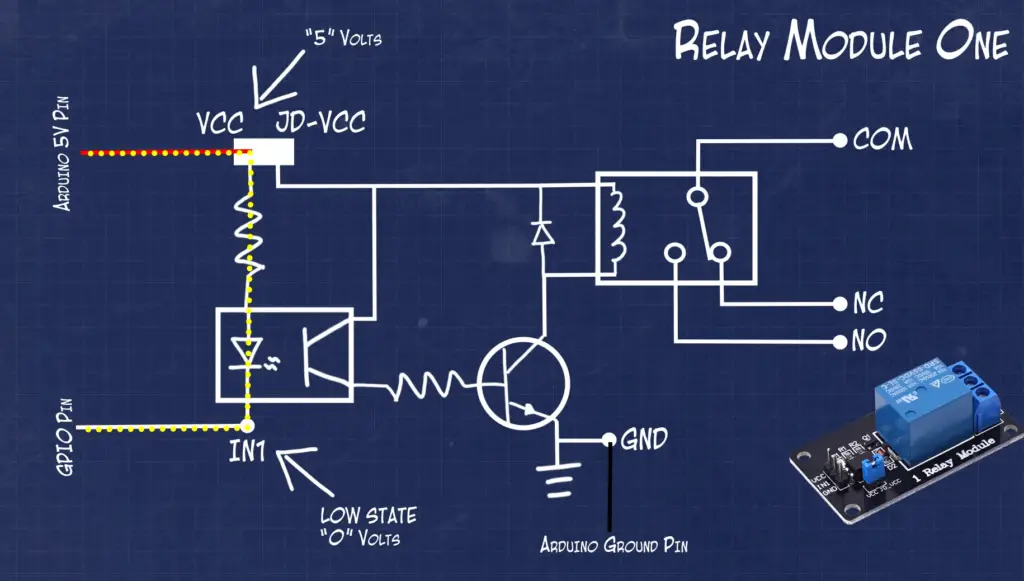
FAQ
What is the relay module used for?
A 5V relay module is used for controlling high voltage or high current electrical devices from low voltage circuits. This makes it suitable for a variety of applications, such as home automation and robotics, where the logic circuit of a microcontroller needs to control something with higher power than what it can output directly.
The most common type of 5V relay module uses an electromechanical coil to open or close a switch which in turn controls the device being switched on or off. A small current is applied to the coil when the switch is supposed to be closed, creating an electromagnetic field that pulls down a lever connected to the switch contacts. When the coil isn’t energized, the lever releases its hold on the switch contacts causing them to open. This is the same principle used in electromechanical relays, but scaled down to match the current and voltage requirements of a microcontroller.
What is the difference between a 5V relay and a 12V relay?
A 5V relay is an electrically operated switch that uses a small amount of power to control a larger voltage and/or current. The smaller signal (5V) can be used to turn on or off the larger voltage such as 12V, 24V, or even 220V. In general, the higher the operating voltage, the greater the switching capacity of the relay. A 5V relay typically has a maximum switching capacity between 10 and 30 amps.
In comparison to a 12V relay, a 5V relay is often employed in applications which require lower voltages but have similar electrical performance requirements as those of their 12V counterparts.
a 12V coil has higher resistance than a 5V coil, so it takes less current to switch on a 12V relay than a 5V one. 12V relays usually have higher contact ratings and can support larger loads. However, the switching capacity of 5V relays is often sufficient for most applications which don’t require high wattage or power.
What is the component of a 5V relay?
A 5V relay module is basically a switching device that uses an electromagnet to create a change in voltage state. It is typically composed of two parts: the coil and contacts. The coil, also called the actuating coil, consists of wire wound around an iron core and creates a magnetic field when it is energized. This magnetic field then moves an armature (a moveable portion) which opens or closes contact points to establish the connection between two different circuits.
The contacts are usually made from metal such as copper or silver and can be either normally open (NO) or normally closed (NC). When the relay is activated, it will either switch current on (if NO) or off (if NC). Since these components are electrically isolated from each other, they protect any connected circuits from harm that could be caused by electrical surges or shorts.
In addition to this, some 5V relay modules also come with a built-in LED indicator light to display the current state of the module. This can be useful for troubleshooting and monitoring purposes as well as providing instant feedback on whether the relay is working correctly.
What is the use of a 5V SPDT relay?
A 5V SPDT relay is an electrical switch used to control higher-voltage circuits with lower voltage signals. It allows a low-voltage signal, such as the one provided by a microcontroller or other low-power circuit, to control larger loads like motors, lights, and appliances that require more power.
A single pole connects the coil of wire (or “electromagnet”) to one of two sets of contacts when energized; one set of contacts connected to ground (commonly referred to as “normally open” or NO) and another connected to a power source (commonly referred to as “normally closed” or NC). When voltage is applied to the coil, an electromagnetic field is created which causes a metal armature to move, closing the contact between the two sets of wires.
A 5V relay module consists of a 5V relay switch and a small circuit board that allows the user to easily connect it to a microcontroller or other low-voltage device without any additional wiring or hardware. This makes it ideal for controlling larger devices from smaller ones, such as using your smartphone or computer to control lights in your home.
Useful Video: Single channel 5v Relay Module – Arduino Interfacing
Conclusion
The 5V relay module is a great and cost-effective way to control your electronics projects. Whether you are controlling lights, motors, or other appliances, these modules can help make the process much easier. Not only do they provide electrical isolation between components but also give you precise timing control of the switching operations. Depending on the type of application you have in mind, there are many different types of 5V relay modules available that suit most applications. It’s important to remember that no single module will work for all applications though so be sure to research which module best suits your needs before making any purchases.
The information provided in this guide should help answer any questions you have regarding what a 5V relay module is and how it works. If you still have any additional questions, don’t hesitate to reach out to an expert in the field who can provide further advice.
Happy tinkering! 🙂
References
- https://www.elprocus.com/5v-relay-module/
- https://www.geya.net/5v-relay-module-how-it-works-and-application/





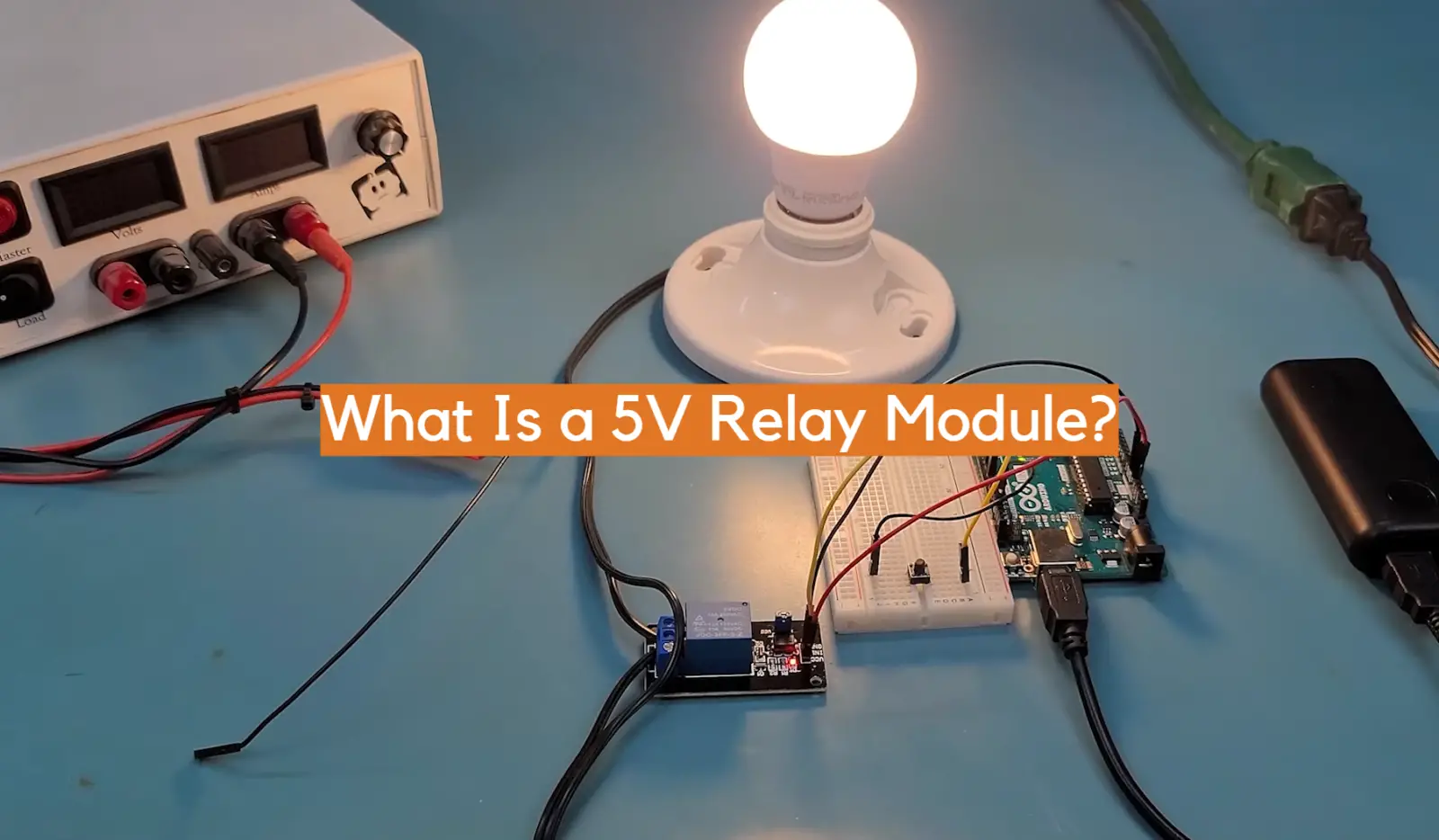







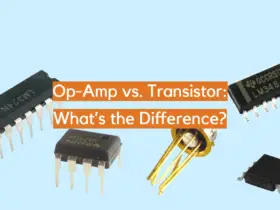
Leave a Reply